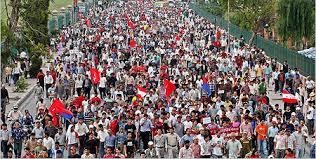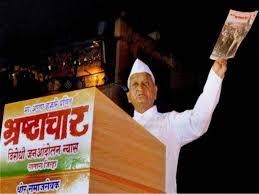CBSE Class 10 Political Parties Notes, Important Question Answers
Political Parties Class 10 Notes– CBSE Class 10 Political Science (Civics) Chapter 6 Political Parties Notes with Detailed explanation. Here is the complete explanation of the lesson along with all the exercises and Political Parties Class 10 Important Question and Answers
- What is political parties?
- Need for Political Parties
- Functions of Political Parties
- Political Parties Class 10 NCERT Solutions
- MCQs for Class 10 Political Science Chapter 6 “Political Parties”
- NCERT Solutions Class 10 Political Science Chapter 6 Political Parties
- CBSE Class 10 History MCQ Questions
- CBSE Class 10 Civics MCQ Questions
- CBSE Class 10 Geography MCQ Questions
- CBSE Class 10 Economics MCQ Questions
- NCERT Solutions Class 10 SST Important Question Answers
Class 10 Political Parties Notes from Political Science Chapter 6
Political Parties Class 10 – In this Chapter, we aim to look into the details of political parties- why do we need them, how many parties are required in a democracy, modes of functioning etc. Since Elections are an important aspect of democracy, looking into the intricacies of political parties becomes important.
What is a Political Party?
A political party is an organized group of people who have the same ideology or who otherwise have the same political positions, and who field candidates for elections, to get them elected and thereby implement their agenda. Political parties are a defining element of representative democracy.
Need for Political Parties
They are one of the most visible institutions in a democracy and are responsible for how a country is run. They take decisions for collective good and are representative of its citizens. This also involves Partisanship. Therefore, a party is known by which part it stands for, which policies it supports and whose interests it upholds. A political party has three components:
-
-
- The leaders
- The active members
- The followers
-
Functions of Political Parties
-
-
-
- Parties contest elections. In India, top party leaders choose candidates for contesting elections.
- Parties put forward different policies and programmes and the voters choose from them.
- A Party reduces multiple views and formulates plans according to common good.
- Parties play a decisive role in making laws for a country.
- Parties form and run governments.
- Parties that lose in the elections play the role of opposition by voicing different views and criticizing the government for its failures or wrong policies.
- Parties also shape public opinion by raising and highlighting issues.
- Parties provide people access to government machinery and welfare schemes implemented by governments.
-
-
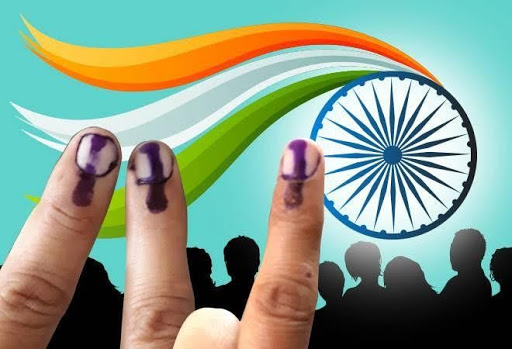
Necessity of Political Parties
They are needed as they help perform all the above functions. Besides these, they help in representing different views on various issues to the government. They bring various representatives together so that a responsible government could be formed. They fulfill the needs of a representative government in a democratic setup.
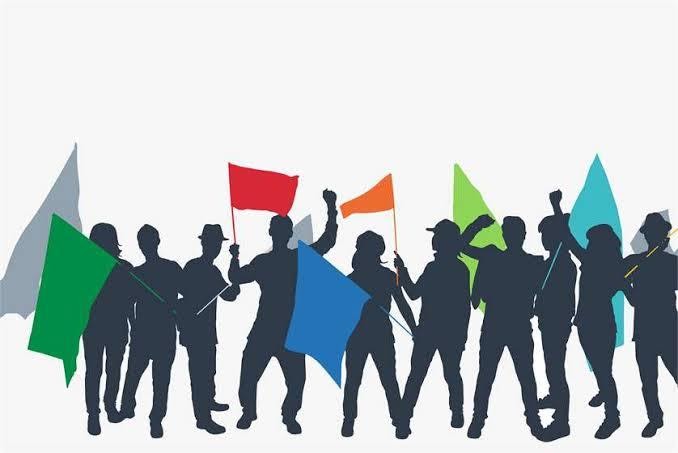
Class 10 Important Videos Links
Class 10 Political Parties Important Question Answers
How many Parties should we have?
In a democracy any group of citizens is free to form a political party.
Any democratic system must allow at least two parties to compete in elections and provide a fair chance for the competing parties to come to power.
Different Party Systems
1. One-party systems- In some countries, only one party can control and run the government. These are called one-party systems. Ex- China. This system however does not allow for choices and is not ideal for a democracy.
2. Two- Party Systems- Under this system, several parties may exist but only two of these have a serious chance of winning a majority of seats and forming the government. Ex- USA and UK.
3. Multi Party System- Under this, more than two parties have a reasonable chance of coming to power either on their own strength or in alliance with others. Ex- India.
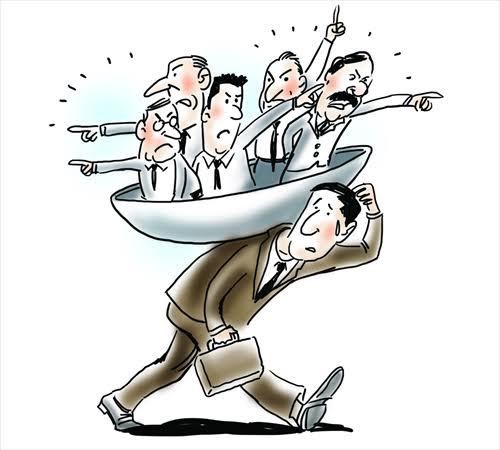
Which Party System is better?
Party system is not something any country can choose. It evolves over a long time, depending on the nature of society, its social and regional divisions, its history of politics and its system of elections. These cannot be changed very quickly. Each country develops a party system that is conditioned by its special circumstances. No system is ideal for all countries and all situations. Therefore, a Party System has to be chosen as per own needs and circumstances.
National Political Parties
Every party in the country registers with the Election Commission. While the Commission treats all parties equally, it offers some special facilities to large and established parties such as providing them a unique symbol.
Parties that get this privilege and some other special facilities are ‘recognized’ by the Election Commission and are called ‘recognized political parties’. There are criteria that need to be fulfilled for a party to qualify as a State or National Party.
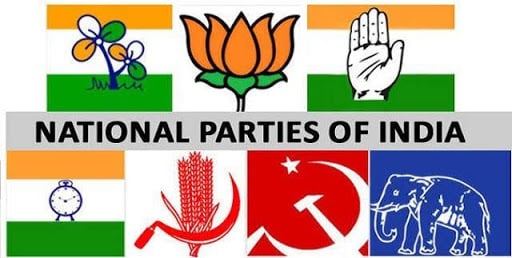
National Parties in India
1) All India Trinamool Congress (AITC)
-
-
-
- Launched on 1 January 1998 under the leadership of Mamata Banerjee.
- Received recognition as a national party in 2016.
- The party’s symbol is flowers and grass.
- Committed to secularism and federalism.
- Has been in power in West Bengal since 2011 and has a presence in Arunachal Pradesh, Manipur and Tripura.
- In the General Elections held in 2014, it got 3.84% votes and won 34 seats, making it the fourth-largest party in the Lok Sabha.
-
-
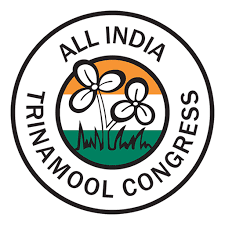
2) Bahujan Samaj Party (BSP):
-
-
-
-
- Formed in 1984 under the leadership of Kanshi Ram.
- Seeks to represent and secure power for the Bahujan samaj which includes the Dalits, Adivasis, OBCs and religious minorities.
- Stands for the cause of securing the interests and welfare of the Dalits and oppressed people.
- It has its main base in the state of Uttar Pradesh and substantial presence in neighbouring states like Madhya Pradesh, Chhattisgarh, Uttarakhand, Delhi and Punjab.
- Formed the government in UP several times by taking the support of different parties at different times.
-
-
-
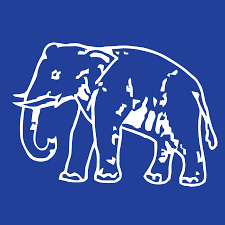
3) Bharatiya Janata Party (BJP)
-
-
-
-
-
- Founded in 1980, formed by Syama Prasad Mukherjee in 1951.
- Wants to build a strong and modern India by drawing inspiration from India’s ancient culture and values and Deendayal Upadhyaya’s ideas of integral humanism and Antyodaya.
- Cultural nationalism (or ‘Hindutva’) is an important element in its conception of Indian nationhood and politics.
- Earlier limited to north and west and to urban areas, the party expanded its support in the south, east, the north-east and to rural areas.
- Emerged as the largest party with 282 members in the 2014 Lok Sabha elections.
-
-
-
-
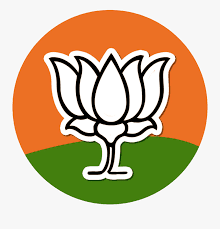
4) Communist Party of India (CPI):
-
-
-
-
-
-
- Formed in 1925. Believes in Marxism-Leninism, secularism and democracy.
- Opposed to the forces of secessionism and communalism.
- Accepts parliamentary democracy as a means of promoting the interests of the working class, farmers and the poor.
- Significant presence in the states of Kerala, West Bengal, Punjab, Andhra Pradesh and Tamil Nadu.
-
-
-
-
-
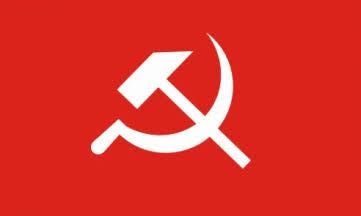
5) Communist Party of India – Marxist (CPI-M):
Founded in 1964. Believes in Marxism-Leninism. Supports socialism, secularism and democracy and opposes imperialism and communalism.
Accepts democratic elections as a useful and helpful means for securing the objective of socio-economic justice in India.
Enjoys strong support in West Bengal, Kerala and Tripura.
The party was in power in West Bengal without a break for 34 years.
In the 2014 Lok Sabha elections, it won about 3% of votes and 9 seats.

6) Indian National Congress (INC):
Popularly known as the Congress Party. One of the oldest parties of the world. Founded in 1885 and has experienced many splits.
Under the leadership of Jawaharlal Nehru, the party sought to build a modern secular democratic republic in India.
The ruling party at the centre till 1977 and then from 1980 to 1989. After 1989, its support declined, but it continues to be present throughout the country.
The party’s main idea is to promote secularism and welfare of weaker sections and minorities.

7) Nationalist Congress Party (NCP):
Formed in 1999 following a split in the Congress party.
Supports democracy, Gandhian secularism, equity, social justice and federalism.
A major party in Maharashtra and has a significant presence in Meghalaya, Manipur and Assam.
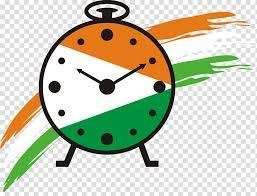
State Parties
Similarly, in the states, there exist region wise parties that are known as State Parties. Some of these parties are:
-
-
-
-
-
-
- Biju Janata Dal
- Sikkim Democratic Front
- Mizo National Front
- Telangana Rashtra Samithi
-
-
-
-
-
Over the last three decades, the number and strength of these parties has expanded. This made the Parliament of India politically more and more diverse. This has contributed to the strengthening of federalism and democracy in India.
Challenges to Political Parties
Since parties are the most visible face of democracy, it is natural that people blame parties for whatever goes wrong within a country. All over the world, people express strong dissatisfaction with the failure of political parties to perform their functions well. Popular dissatisfaction and criticism have focused on four problem areas. The challenges include are-
-
-
-
-
-
-
-
- The first challenge is lack of internal democracy within parties.
- The second challenge is of dynastic succession.
- The third challenge is about the growing role of money and muscle power in parties, especially during elections.
- The fourth challenge is that very often parties do not seem to offer a meaningful choice to the voters. This is on account of lack of ideological differences between different parties.
-
-
-
-
-
-
In order to face these challenges, political parties need to be reformed.
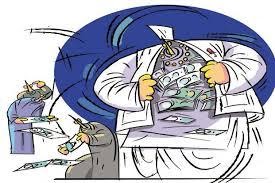
How can Parties be reformed?
Recent efforts and suggestions in our country to reform political parties and its leaders include-
-
-
-
-
-
-
-
- The Constitution was amended to prevent elected MLAs and MPs from changing parties. This was done because many elected representatives were indulging in Defection in order to become ministers or for cash rewards and hence an Anti-Defection Law was included.
- It is mandatory for every candidate who contests elections to file an Affidavit giving details of his property and criminal cases pending against him.
- The Election Commission passed an order making it necessary for political parties to hold their elections and file their income tax returns.
-
-
-
-
-
-
Other suggestions to reform political parties include-
-
-
-
-
-
-
-
- A law should be made to regulate the internal affairs of political parties.
- It should be made mandatory for political parties to give a minimum number of tickets, about one-third, to women candidates.
- There should be state funding of elections. The government should give parties money to support their election expenses.
-
-
-
-
-
-
These suggestions require quick incorporation and pressure must be created on political parties to ensure that they function with a vision of betterment of the nation and not for their selfish motives. Apart from this, the quality of democracy depends on the degree of public participation. It is difficult to reform politics if ordinary citizens do not take part in it and simply criticize the government or political parties from outside.
Top
Political Parties Class 10 NCERT Solutions
1. State the various functions political parties perform in a democracy
Answer.
The functions performed by the political parties are:
-
-
-
-
-
-
- Contesting of elections.
- Introducing various policies and programmes for the people.
- Playing an important role in decision-making to legislate and execute.
- Forming and running the government
- Playing the role of opposition and keeping a check on the ruling party.
- Moulding and forming the public’s opinion on various issues.
-
-
-
-
-
2. What are the various challenges faced by political parties?
Answer.
Some challenges faced by political parties include:
-
-
-
-
-
-
- Lack of internal democracy – If there is a concentration of power in the hands of one or only a few ministers in the party, it gives rise to internal conflicts.
- Dynastic Succession –Under this, the leader of the party sets a lineage and members of the same family succeed one after another. This affects the chances of other ministers in the party to gauge an effective position in the party.
- Use of Money and muscle power –This reduces the scope for smaller and regional parties to carve a niche for themselves. These powers can mostly be seen in use during the election period where parties’ rich candidates can gain more votes using both of these.
-
-
-
-
-
3. Suggest some reforms to strengthen parties so that they perform their functions well?
Answer.
The various reforms that a political party can make are:
-
-
-
-
-
-
- A provision within a political party to tackle internal conflicts.
- Increased representation in the party for women candidates.
- Anti- defection law
- The parties should not promote candidates having criminal records.
- Promote state funding of elections so that candidates coming from a poor background stand an equal chance to win.
-
-
-
-
-
4. What is a political party?
Answer.
A political party is a group of people who come together to contest elections and hold power in the government. They agree on some policies and programmes for the society, with a view to promoting the collective good.
5. What are the characteristics of a political party?
Answer.
The political party has the following characteristics:
-
-
-
-
-
-
- They have members who share the same interests in policies and programmes.
- They seek to introduce policies which are for the welfare of the citizens.
- There are three components – leader, active members and followers.
-
-
-
-
-
6. A group of people who come together to contest elections and hold power in the government is called a _____________________.
Answer.
A group of people who come together to contest elections and hold power in the government is called a political party.
7. Match List-I (organisations and struggles) with List-II and select the correct answer using the codes given below the lists:
| List-I | List-II | |||||
| 1. | Congress Party | A. National Democratic Alliance | ||||
| 2. | Bharatiya Janata Party | B. State party | ||||
| 3. | Communist Party of India (Marxist) | C. United Progressive Alliance | ||||
| 4. | Telugu Desam Party | D. Left Front | ||||
| 1 | 2 | 3 | 4 | |||
| (a) | C | A | B | D | ||
| (b) | C | D | A | B | ||
| (c) | C | A | D | B | ||
| (d) | D | C | A | B | ||
Answer.
| 1 | 2 | 3 | 4 | |
| (c) | C | A | D | B |
8. Who among the following is the founder of the Bahujan Samaj Party?
A. Kanshi Ram
B. Sahu Maharaj
C. B.R. Ambedkar
D. Jotiba Phule
Answer.
A. Kanshi Ram
9. What is the guiding philosophy of the Bharatiya Janata Party?
A. Bahujan Samaj
B. Revolutionary democracy
C. Integral humanism
D. Modernity
Answer.
D. Modernity
10. Consider the following statements on parties.
-
-
-
-
-
-
- Political parties do not enjoy much trust among the people.
- Parties are often rocked by scandals involving top party leaders.
- Parties are not necessary to run governments.
-
-
-
-
-
Which of the statements given above are correct?
-
-
-
-
-
-
- A, B, and C
- A and B
- B and C
- A and C
-
-
-
-
-
Answer.
(b) A and B
Top
More Resources
| Class 10 Science Important Questions and Answer |
| Class 10 Social Science Important Questions and Answers |
| Class 10 English Important Questions and Answers |
| Class 10 Economics MCQs |
Also See :
Class 10 Social Science Civics Lessons
- NCERT Class 10 Power Sharing Notes Chapter 1 Explanation
- NCERT Federalism Class 10 Notes | Civics Chapter 2 Explanation
- NCERT Federalism Class 10 Notes | Civics Chapter 7 Explanation
Class 10 Social Science History Lessons
- Chapter 1 The Rise of Nationalism in Europe, Class 10 History Explanation, Question and Answers
- Nationalism in India Class 10 Notes History Chapter 2
- Chapter 3 The Making of a Global World, Class 10 History Explanation, Question and Answers
- Chapter 4 The Age of Industrialization, Class 10 History Explanation, Question and Answers
- Print Culture and The Modern World, Class 10 History Explanation, Question and Answers
